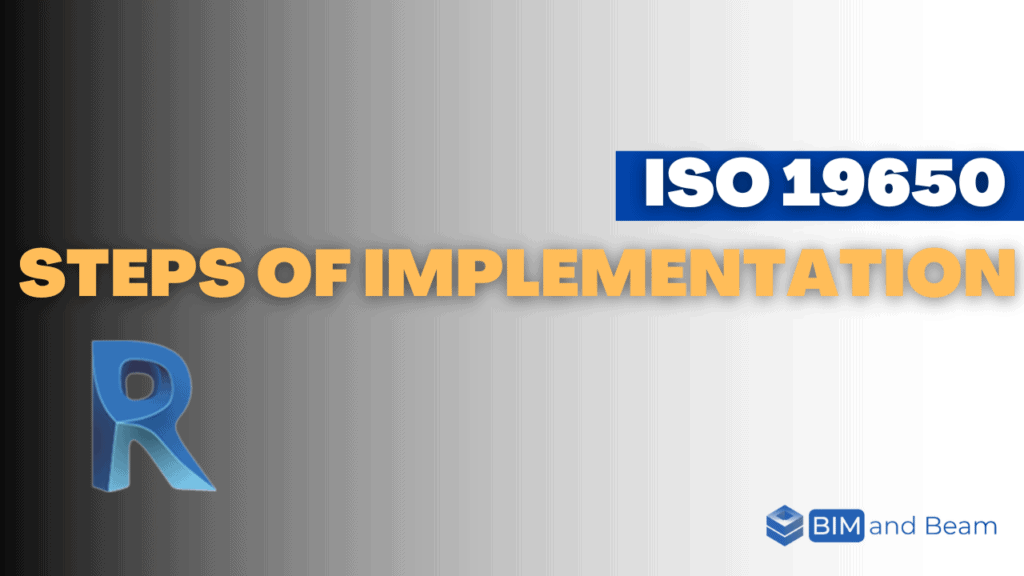what are BIM Standards?
Building information modeling (BIM) is a digital representation of the physical and functional characteristics of a building. It is a collaborative process that involves the creation and use of a digital model to design, construct, and operate a building.
There are various BIM standards have been developed to provide guidelines for the creation and use of BIM models. These standards help to ensure that BIM models are accurate, consistent, and interoperable and that they can be used effectively throughout the life cycle of a building.
Some of the key BIM standards include:
- ISO 19650. This is a series of international standards that provide guidelines for the management of information within the construction and operation of buildings and civil engineering works. It includes guidelines for the creation, management, and use of BIM throughout the life cycle of a building.
- National BIM Standard (NBIMS). The National BIM Standard (NBIMS) is a set of guidelines and best practices for the use of BIM in the United States. It is developed and maintained by the National Institute of Building Sciences (NIBS).
- BS 1192. This is a British standard that provides guidelines for the creation, use, and management of BIM models in the construction industry. It is maintained by the British Standards Institution (BSI).
There are also other BIM standards that have been developed by professional organizations and industry groups. E.g the Association of General Contractors (AGC) and the Royal Institute of British Architects (RIBA). These standards provide additional guidance and best practices for the use of BIM in specific regions or industries.
ISO 19650 BIM:
ISO 19650 is a series of international standards that provide a framework for building information modeling (BIM) and management. BIM is the process of creating, using, and maintaining digital representations of built assets, such as buildings, infrastructure, and other types of construction projects.
The ISO 19650 standards are designed to improve the efficiency and effectiveness of BIM processes. It also enhances collaboration and communication among project stakeholders. They cover the entire lifecycle of a built asset, from design and construction through to operation and decommissioning.

ISO 19650 BIM: Main Parts
There are two main parts to the ISO 19650 series: ISO 19650-1 and ISO 19650-2. ISO 19650-1 provides guidance on the management of information throughout the lifecycle of a built asset, while ISO 19650-2 focuses on the creation and use of BIM models.
One of the key benefits of implementing ISO 19650 is the ability to streamline BIM processes and reduce the risk of errors or omissions. By establishing clear guidelines and protocols for managing and sharing information, firms can ensure that all project stakeholders have access to the most up-to-date and accurate information.
Another benefit of ISO 19650 is the ability to improve communication and collaboration among project stakeholders. By establishing a common language and set of processes, firms can facilitate better communication and collaboration, which can lead to more efficient and successful projects.
The ISO 19650 standards are applicable to all types of built assets, including commercial, residential, and industrial projects. They can be used by a wide range of stakeholders, including architects, engineers, contractors, and facility managers.

ISO 19650 BIM: Steps of Implementation
Implementing ISO 19650 in a firm typically involves several steps, including:
- Assessing the current state of the firm’s BIM processes and identifying areas for improvement
- Defining the scope of the ISO 19650 implementation, including which standards will be applied and to which projects or assets
- Developing a roadmap and plan for implementing the standards, including any necessary training or capacity building
- Implementing the ISO 19650 standards and processes, including creating and maintaining digital representations of built assets. Also establishing procedures for managing and sharing information
- Measuring the success of the implementation and identifying any areas for further improvement
So, to successfully implement ISO 19650, firms may need to invest in new technology and equipment. As well as provide training for employees. The implementation costs can vary depending on the size and complexity of the firm and the projects involved.

The Benefits of using ISO Standards
There are many benefits to using ISO standards, including:
- Improved quality: ISO standards help to ensure that products and services meet certain quality standards, which can help to improve the overall quality of a company’s offerings.
- Increased efficiency: ISO standards can help to streamline processes and reduce waste, leading to increased efficiency and cost savings.
- Enhanced customer satisfaction: Customers may have more confidence in a company’s products or services if they are certified to meet ISO standards, which can lead to increased customer satisfaction.
- Improved safety: ISO standards can help to ensure the safety of products and services, which can reduce the risk of accidents and injuries.
- Enhanced competitiveness: Companies that are certified to ISO standards may be seen as more reliable and trustworthy, which can give them a competitive advantage in the marketplace.
- Simplified trade: ISO standards can help to facilitate international trade by providing a common set of standards that are recognized globally.
Conclusion
Overall, the benefits of implementing ISO 19650 can far outweigh the costs. By streamlining BIM processes and improving communication and collaboration among project stakeholders, firms can improve the efficiency and effectiveness of their projects and better meet the needs of their clients.



